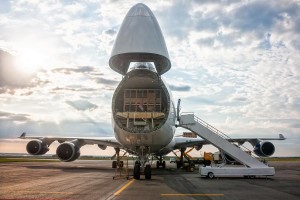In a world where everything is connected and where a message that used to take days to arrive is now received in milliseconds, it is no wonder that a need would emerge for a service with the quickest turnaround possible, leading to the development of the commercial use of aircraft across the board.
This kind of trade dates back to the early twentieth century, with the first transportation of goods by air taking place in 1910 in Ohio, involving the transport of 200 pounds of silk. This flight was the longest recorded at that time, taking approximately 57 minutes.
However, the first commercial flight would not take place until 1914, flown by Tony Jannus, covering the distance between Saint Petersburg (Russia) and Tampa (the United States). The evolution of such flights would be stalled due to World War II.
While several attempts were made during the 1920s to develop air trade, it was only in the 1930s when this really took off in this sector. Flights, such as those made by Charles Augustus Lindbergh, who traversed the ocean between America from Europe, boosted this type of trade.
This was also helped by the development of transportation. In 1958, British airlines launched the airjet, an air system powered by jet engines, marking the start of the use of gas turbines to power engines. Ten years later, the first high-capacity, 4-engine plane took to the skies: the Boeing 747.
The features and advantages of freight aircraft
Considerably more expensive to maintain a large aircraft than a truck or train. It is therefore logical to look at the benefits of air transport compared to other forms of transport. The main factor is time, or rather, the time saved involved in transporting a product from the source to destination.
The dimensions of a cargo plane may vary by model. The Boeing 737, for example, has a volume of 15 cubic meters and a load capacity of 2 tons, while the Boeing 777-200 has a volume of 83 cubic meters and a capacity of 18 tons. While both aircraft are huge, their dimensions and tonnage are actually not related.
What they do have in common is that cargo planes are often fitted with larger doors (compared with the measurements of a standard airplane) for the easy loading and unloading of goods. This type of cargo is sometimes transported in combi aircraft that also carry passengers.
All aircraft exclusively transporting goods have a central section (or fuselage) that is wider than that of commercial aircraft to accommodate tons of cargo and a large number of wheels to land at airports with different characteristics. Finally, these aircraft generally have several goods entrance doors, including in the rear section, because of which, the wings and tail are located at a higher position than normal to facilitate loading and unloading.
Large storage capacity and speed
Due to the high value or perishable nature of many products transported, air transport is the most viable alternative available. Why? Mainly thanks to the fact that it is the fastest mode of transportation available that can also cover long distances in a short amount of time. It also allows goods to be transported to difficult-to-access areas.
Airfreight today
Air transport is overshadowed when compared to maritime transport. However, the emergence of express delivery companies have led to a gradual change in this trend with air freight transport now considered as a growing market.
A large number of express parcel companies have been emerging since the 1990s. The growth of the internet and e-commerce have led to a growth in long distance orders alongside an increase in air transport to reach their destination as soon as possible. In fact, the forecasts point to sustained growth in air freight of 5-6%, with merchandise transported by air expected to double in the next 12 to 15 years.
This type of transport is also used by Bilogistik, alongside ship or road transport, to provide our customers with an optimum logistics solution for transporting their goods. This type of air transport also provides our customers greater speed, and for that reason, we offer shorter delivery times. Due to our awareness of how urgency is a key factor in many cargo shipments, we have a large network of international partners that help us to improve the speed of our service every day.


